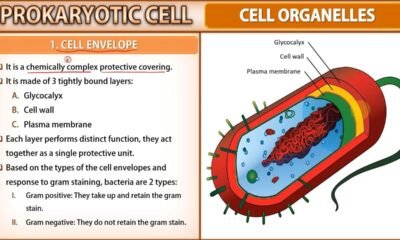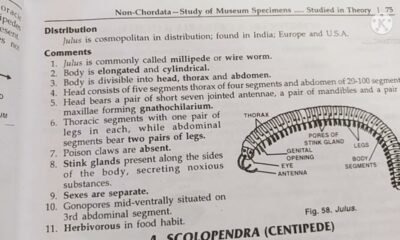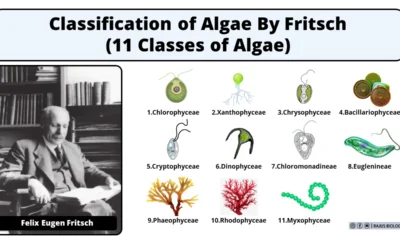Blog
Structure of Lichens (With Simple Diagram) | Lichenology
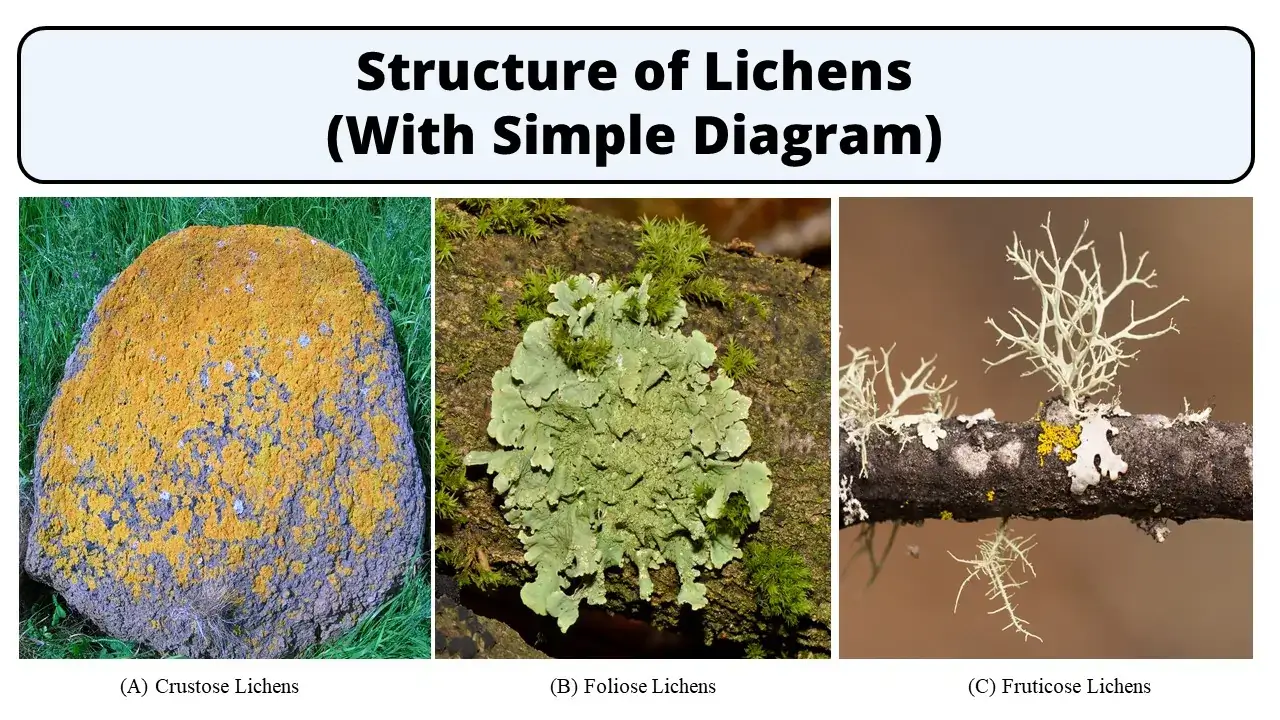
In this article we will discuss about structure of lichens
Structure of Lichens
- In lichen, the fungal partner produces a thallus, which accommodates the algae.
- Lichens exhibit a wide range of colors, some are greyish green, grey, white, orange, yellowish green, brown, black and red.
- Based on their external morphology, lichens are grouped into three types: crustose, foliose and fruticose lichens.1. Crustose lichens
- The thallus is small, thin, flattened, leathery structure very closely attached to the substratum like stones, soil, rocks and barks.
- It is very difficult to separate them from the substratum without damaging it.
- The fruiting bodies of lichens are present on the upper surface.
- E.g., Lecanora, Graphis, Rhizocarpon, Ochrolechia etc.
2. Foliose lichens
- The thallus is flat, broad leaf like, well branched with lobed or irregular margins.
- Some part of their thallus adheres more or less firmly to the substratum by rhizinae
- rhizinae serve as an organ for anchorage and absorption.
- The lower surface of the thallus maybe white or sooty (black powdery).
- The upper surface of the thallus is greyish green in colour and It has many fruit bodies.
- E.g., Xanthoria, Parmelia, Physcia, Anaptychia etc.
3. Fruticose lichens
- The thallus is well branched slender, ribbon like or cylindrical, either bushy and erect (Evernia, Cladonia) or pendent and tassel like (Usnea).
- There is no upper and lower surface in the thallus but are attached to the substratum by a definit basal portion forming a flattened disc.
- These lichens are attached with rock surfaces and branches and foliage of trees.
- It can be removes from the surface by hand.
- E.g., Cladonia, Usnea, Alectoria etc.
Internal Structure of Lichens
- The lichen thallus is anatomically composed of both fungal and algal components.
- A cross-section of lichen thallus is consist of four distinct zones: the Upper Cortex, Algal Layer, Medulla, and Lower Cortex.
I. Upper cortex
- This is the outermost protective layer, made up of tightly interwoven fungal hyphae.
- The intercellular spaces are typically absent; if they present, they are filled with gelatinous substances.
- In some species, this layer is interrupted with breathing pores and these pores help for aeration.
II. Algal zone or Gonidial layer
- This layer consists of algal cells and they are surrounded by thin walled loosely packed fungal hyphae.
- This part serves as the photosynthetic region of the thallus.
- This layer is also called gonidial layer because, earlier scientist belief that these cells play a role in reproduction.
III. Medulla
- This layer present just below the gonidial layer.
- It is less dense and made up of loosely interwoven fungal hyphae.
- The fungal hyphae in this zone are scattered and possess thick walls.
IV. Lower cortex
- The lower cortex is present below medulla and it is made up of densely packed hyphae.
- In some lichens, this Lower cortex is absent. E.g., Lobaria pulmonaria.
- In this lower cortex gives rise to bundles of hyphae, known as rhizines.
- This rhizines penetrate the substratum to serve as anchoring structures.
Structure of Ascolichens, Basidiolichens and Deuterolichens
I. Ascolichens
- Thallus can be crustose, foliose or fruticose.
- They exhibit distinct upper and lower surfaces.
- Mostly the thallus are heteromerous, So internally they have a distinct four layered structure: Upper Cortex, Algal Layer, Medulla and Lower Cortex
2. Basidiolichens
- Primarily they are crustose lichens
- Thallus are mostly Homoiomerous, So internally they lack a distinct layered structure.
- Algal cells are scattered throughout the thallus, interspersed with fungal hyphae.
3. Deuterolichens
- They can be crustose, foliose, or fruticose.
- They can be either heteromerous or homoiomerous.
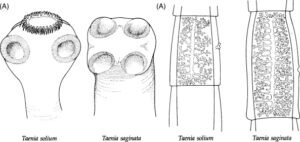
Conclusion
- Ascolichens consist of Ascomycetes fungi and have a clearly four layered internal structure (heteromerous)
- Basidiolichens are formed from Basidiomycetes fungi and they lack distinct internal layers (homoiomerous)
- Deuterolichens, on the other hand, are made up of Deuteromycetes fungi and they exhibit a wide range of internal structures, with both heteromerous and homoiomerous types.

 Blog7 months ago
Blog7 months ago[PPT] Human Reproduction Class 12 Notes
- Blog7 months ago
PG TRB Botany Study Material PDF Free Download
- Blog7 months ago
Contribution of Indian Phycologists (4 Famous Algologist)

 Blog7 months ago
Blog7 months agoCell The Unit of Life Complete Notes | Class 11 & NEET Free Notes

 Blog7 months ago
Blog7 months ago[PPT] The living world Class 11 Notes

 Blog7 months ago
Blog7 months agoJulus General Characteristics | Free Biology Notes

 Blog7 months ago
Blog7 months agoClassification of Algae By Fritsch (11 Classes of Algae)
- Blog7 months ago
Class 12 Biology Notes Chapter wise PPT





